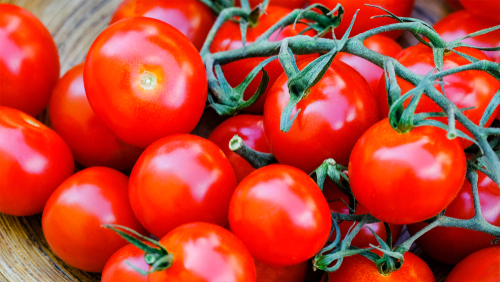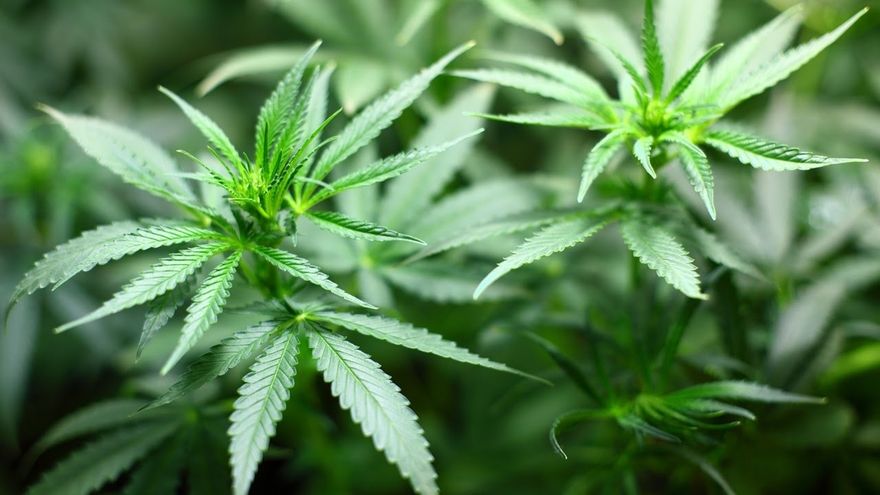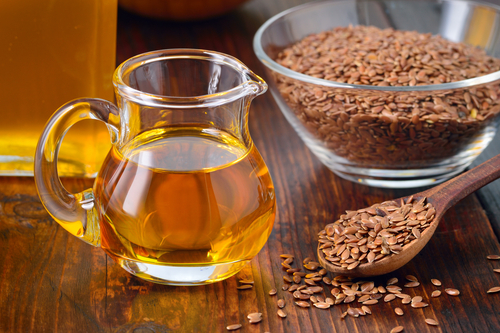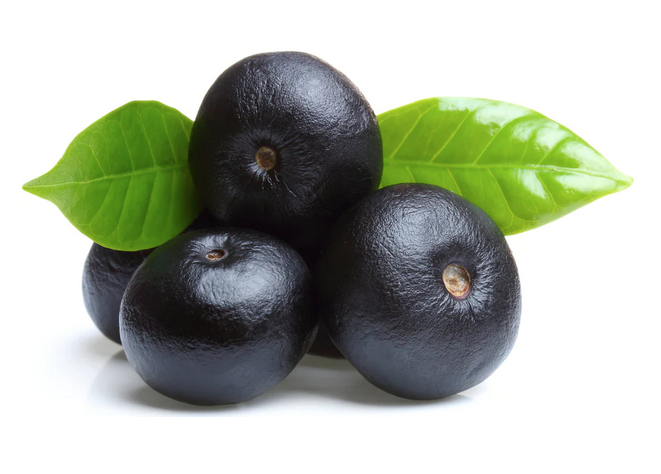Research on medicinal herbs and phytochemicals continues to surge worldwide. Here are summaries of a few of the recent studies that grabbed our attention here at Holistic Primary Care.
Horsetail Extract Matches Thiazide for BP Regulation

A standardized extract of Horsetail (Equisetum arvense) produced clinically and statistically significant reductions in both systolic and diastolic blood pressure in patients with Stage I systemic arterial hypertension (SAH). The effects were comparable to those seen with hydrochlorothiazide (HCTZ) in this head-to-head comparison trial.
Researchers at the Federal University of Goiás, Brazil, randomized the cohort of 58 people to either HCTZ, 25 mg per day, or 900 mg per day of a dry extract of the Equisetum for a total of three months. They assessed systolic, diastolic, and casual blood pressure (the sum of stable basal pressure measured at rest and labile pressure measured during physical and mental stimulation) every 30 days.
Daily ingestion of the horsetail extract resulted in a 12.6 mmHg mean decrease in systolic pressure, and an 8.1 mmHg drop in diastolic pressure. This translated into a mean casual pressure of 134/84.5 mmHg at the close of the study, compared with 145/95.7 mmHg at baseline (Carneiro DM, et al. Phytomedicine. 2022).
HCTZ performed equally, and there were no significant differences between the herb and the drug on any of the parameters measured in this study. Both were well-tolerated, with few adverse effects reported for either of them.
An ancient plant, Equisetum is widely distributed throughout the northern hemisphere even as far north as Scandinavia. It is also present, though to a lesser degree, in the southern hemisphere. It has a long history of use in Austrian herbal medicine, usually taken as a tea or via compresses, for treatment of skin, kidney, and rheumatic disorders. This study, though preliminary suggests it could have a role in the management of hypertension, especially in patients who are reluctant to use pharmaceuticals.
Tomato Lycopene Lowers Systolic BP
Daily supplementation with 15 mg or more of tomato-derived lycopene for eight weeks can reduce systolic blood pressure by a mean of 2.6 mmHg. That’s the upshot of a new metanalysis of 10 studies representing nearly 700 total subjects.

Mahnaz Rezaei Kelishadi and colleagues at the School of Nutrition and Food Science, Isfahan University, Iran, report that the pressure-mitigating effect of this unique carotenoid—found abundantly in tomatoes, watermelon, and papayas—was greatest in people with baseline systolic pressures over 130 mmHg (Kelishadi MR, J Herb Med. 2022).
While there was no effect on diastolic pressure in the aggregate analysis, the investigators did find significant diastolic reductions in the studies that enrolled patients with baseline diastolic pressure over 80 mmHg.
This new report corroborates a 2017 metanalysis by investigators at Northumbria University, UK, looking at 21 studies of lycopene and other tomato-based products. They concluded that lycopene supplementation, and increased intake of tomatoes has positive effects on blood lipids, blood pressure and endothelial function (Cheng HM, et al. Athersoclerosis. 2017).
Oregano Mitigates Burden of Parkinson’s Disease

A tea made from Origanum majorana (aka oregano) can reduce depression and other non-motor symptoms associated with idiopathic Parkinson’s disease, according to a recent placebo-controlled study by researchers at Sousse University in Tunisia.
A total of 60 patients were randomized to a self-prepared placebo herbal tea, or a self-prepared infusion of 5 g oregano (2 spoonfuls) in 100 ml boiling water per day. After 30 days, those in the oregano group showed significant reductions in their Beck Depression Inventory and Non-Motor Symptom Scale scores. There were no such changes in the placebo group. Neither group showed changes in motor symptom scores.
Infusions made from fresh or dried oregano are a common and longstanding part of traditional North African medicine. There were no adverse effects associated with daily consumption of oregano tea at this dose level. (Chahra C, et al. Parkinsonism Relat Disord. 2021).
Rosemary Compound Blocks Viral Adhesion
Carnosic acid, a phytochemical produced in abundance by the culinary herb Rosemary (Rosmarinus officinalis) can block the SARS-CoV-2 spike proteins from attaching to ACE2 receptors on human epithelial cells, according to researchers at the Tokyo University of Technology, and Scripps Research Institute, La Jolla, CA.

Classified as a phenolic diterpene, carnosic acid exerts direct anti-inflammatory effects, potentially quelling the NLRP3 inflammasome activation that drives much of the tissue damage associated with Covid-19.
CA can downregulate inflammation via several other mechanisms as well: it inhibits macrophage expression of inflammatory cytokines including tumor necrosis factor-α (TNF-α)), and it minimizes production of LPS-induced nitric oxide (NO) reactive nitrogen species.
Since it can pass the blood brain barrier, and is able to reach the brain parenchyma, CA may be neuroprotective against the neurodegenerative sequelae of long Covid.
“CA appears to inhibit the manifestations of SARS-CoV-2 infection by two mechanisms, one at the point of viral entry, possibly through covalent binding to the ACE2 receptor protein, and the other by ameliorating cytokine storm through the inhibition of NLRP3 inflammasome activation. Thus, CA represents a potential therapeutic for COVID-19,” write Takumi Satoh and colleagues.
They add that CA might also be beneficial for neurodegenerative diseases like Alzheimer’s and Parkinson’s. (Satoh T, et al. Antioxidants, 2022)
Cannabinoids Block COVID Viral Entry
Researchers at Oregon State University recently showed that cannabigerolic acid (CBGA), and cannabidiolic acid (CBDA)—two compounds naturally produced by Cannabis sativa—can bind to the SARS-CoV-2 spike protein, at least in vitro.

Richard van Breemen and colleagues used a technique called affinity selection mass spectrometry to screen a host of plant compounds, including cannabinoids, to see which might have potential to bind target molecules on the virus. Then, in a proof of concept experiment, they showed that CBGA and CBDA could block the entry of live SARS-CoV-2 into human epithelial cell cultures (Van Breemen RB, et al. J Nat Prod. 2022.)
“Orally bioavailable and with a long history of safe human use, these cannabinoids, isolated or in hemp extracts, have the potential to prevent as well as treat infection by SARS-CoV-2,” says van Breemen.
He added that CBGA and CBDA are not controlled substances like THC, the most well-known psychoactive compound found in produced by the Cannabis genus, and they have a good safety profile in humans.
“Cell entry inhibitors, like the acids from hemp, could be used to prevent SARS-CoV-2 infection and also to shorten infections by preventing virus particles from infecting human cells. They bind to the spike proteins so those proteins can’t bind to the ACE2 enzyme, which is abundant on the outer membrane of endothelial cells in the lungs and other organs,” writes van Breemen.
Cannabis is only one of many plants that produce compounds that can block entry of SARS-CoV-2. Licorice (Glycyrrhiza uralensis) is another.
Researchers at the Peking University School of Pharmaceutical Sciences screened over 100 distinct licorice-derived phytochemicals for their ability to attach to key receptor-binding sites on viral spike proteins.
They found two such compounds–triterpenoids licorice-saponin A3 (A3) and glycyrrhetinic acid (GA)—that showed strong affinity for the spike proteins. This suggests that they could potentially prevent SARS-CoV-2 infection by blocking entry and replication of the virus (Yi Y, et al. J Adv Res. 2022).
Though the findings are preliminary, the authors hold that “these triterpenoids may contribute to the clinical efficacy of licorice for COVID-19 and could be promising candidates for antiviral drug development.”
High Intake of Plant Omega-3 Lowers HF Death Rates
Patients with heart failure (HF) who are in the highest two quartiles for circulating levels of alpha-linolenic acid (ALA)—a plant-derived omega-3 fatty acid—had a 39% lower risk of HF-associated hospitalization and death than those in the lowest quartiles.
Iolanda Lázaro and colleagues at the Hospital del Mar Medical Research Institute (IMIM), Barcelona, used gas chromatography to study serum ALA levels—measured as a percentage of total serum phospholipids—in a cohort of 905 ambulatory HF patients. The subjects had a mean age of 67, and roughly two-thirds were male. The primary endpoint was a composite of all-cause mortality, HF-specific death, and HF-associated hospitalization during a median follow-up of 2.4 years.

Compared with patients in the lowest ALA quartile, those in the top two quartiles had a 49% lower rate of death due to HF, and a 42% lower rate of HF-related hospitalizations (Lázaro I, et al. J Am Coll Cardiol. 2022).
Surprisingly, they found no such correlations between HF outcomes and fish-based omega-3s (EPA and DHA), suggesting that ALA—found in flax seed, walnuts, chia, hemp, and purslane–has different modes of action from the marine-derived omegas. The authors suggest that patients with low ALA levels “might be a target population in whom to test dietary ALA-rich interventions to promote quality of life.”
In an editorial accompanying the Lázaro paper, heart failure expert Abdallah Al-Mohammad, of the Northern General Hospital, Sheffield, UK, postulated that ALA confers its benefits by mitigating the inflammation that exacerbates HF. He views the Lázaro study as “hypothesis-generating,” but not as definitive proof that ALA interventions would lower HF morbidity and mortality.
Açaí Reduces Arterial Stiffness

Daily supplementation with 200 grams of anthocyanidin-rich Açaí-juçara (Euterpe edulis Martius) pulp resulted in a measurable change in pulse wave velocity (PWV), a measure of arterial stiffness, in a cohort of overweight individuals.
In recent years, Açaí has become popular worldwide as a “superfood” owing to its high content of fiber, healthy fats, and antioxidant compounds.
Cardiologists at the Rio Grande do Sul/University Foundation of Cardiology, Porto Alegre, Brazil, randomized 55 people with body mass index measurements of 25 kg/m2 or greater, to restricted calorie diet plans that did or did not include daily intake of Açaí, the small purple fruits of a particular species of Amazonian palm trees.
After 12 weeks, the subjects in the açaí group showed a statistically significant reduction in PWV from baseline. This is suggestive of reduced arterial stiffness.
Those in the non-Açaí group did not show any changes in PWV (Arisi TOP, et al. Phytother Res. 2022).
The researchers did not find any difference between the two groups on measurements of peripheral vascular resistance, or endothelial flow-mediated dilation.
Saffron Comparable to Ritalin for Kids with ADHD

An open label pilot study involving 53 children and adolescents with ADHD shows that oral supplementation with Saffr’activ—a standardized extract of saffron (Crocus sativus)—was comparable to the drug Ritalin (methylphenidate) in reducing subjective and objective signs and symptoms of ADHD and hyperactivity.
A multicenter research team in Spain recruited a cohort of ADHD patients, ranging in age from 7 to 17 years. All the kids, and their families, participated in a psychoeducation program. They were then given a choice to go on extended-release methylphenidate (titrated up to 1 mg/kg per day) or the saffron extract (30 mg/day). There were 27 patients in the methylphenidate group, and 36 in the saffron group, and they remained on treatment for 3 months.
Saffron produces a number of compounds including crocin, picrocrocin, and safranal, which interact with NDMA and GABA receptors in the human nervous system, thus promoting the secretion of dopamine, serotonin, and noradrenalin. The Spanish researchers point out that dopamine and noradrenalin are the key neurotransmitters associated with ADHD.
They evaluated the kids at baseline and again after 3 months using an array of standardized assessment tools including the 18-item Swanson, Nolan and Pelham (SNAP)-IV questionnaire to measure inattention and hyperactivity; the Behavioral Rating Inventory of Executive Function—Second Edition (BRIEF-2) which measures inhibition, flexibility, emotional control, initiative, working memory, planification, self-supervision, material organization, and task supervision; and the Sleep Disturbance Scale for Children (SDSC).
They also used the Conners’ Continuous Performance Test, version 3 (CPT-3), a task-based test that gives objective measurements of impulsivity and the ability to sustain attention. The CPT-3 is a direct measure that, unlike the other tests, does not depend on the impressions of an external observer.
“The most relevant finding is that both treatments showed statistically significant improvements in both core ADHD symptoms and executive functions. More importantly, they were comparable in terms of efficacy, measured with both pen-and-paper tests filled out by parents, and objective measures,” report Hilario Blasco-Fontecilla and colleagues.
There were no major differences between methylphenidate and the saffron on any of the major ADHD parameters, though the researchers did note that saffron appeared to be more effective for reducing hyperactivity symptoms, while methylphenidate was more effective on symptoms of inattention. Some parents of kids in the saffron group reported a marked improvement in their childrens’ speed of falling asleep—a finding not seen in the drug group (Blasco-Fontecilla H, et al. Nutrients. 2022).
Overall, the herb was on par with the drug. The Spanish researchers note that their data are in accord with three earlier studies all of which showed some degree of efficacy for extracts of saffron in treatment of ADHD. However, those studies were entirely dependent on subjective pen-and-paper evaluations, and did not include objective measures.
Though they acknowledge the limitations of their study–particularly the fact that it was not blinded or randomized—they believe their findings support a role for Saffr’activ in the care of children with ADHD. It could be a viable option for parents reluctant to put their kids on stimulant drugs.
Green Tea Extract Reduces UV Skin Damage

Oral supplementation with antioxidant-rich green tea extracts appears to have a protective effect against skin damage caused by ultraviolet radiation exposure.
Antonella Di Sotto and colleagues at the Sapienza University of Rome, analyzed data from 12 clinical studies specifically looking at green tea preparations for prevention or treatment of skin diseases. Most of these studies were focused on photoaging and UV-induced erythema—that’s sunburn in common language.
The trials varied widely in their size, inclusion and exclusion criteria, green tea products and doses tested, and observed outcomes. Most of the studies looked at products containing between 40% and 70% catechins.
Overall the data are supportive of the notion that green tea—or compounds derived from it—may have potential sunscreen effects.
“The evidence supports the use of oral green tea preparations to protect skin from damage induced by low-dose ultraviolet radiation,” wrote De Sotto and colleagues (Di Sotto A, et al. Nutrients. 2022). “However, a higher than 2-month supplementation period seems to be needed for clinically visible improvements on the skin.”
Green tea (Camellia sinensis) leaves produce many antioxidant polyphenols and catechins. The most well-known is epigallocatechin-3-gallate (EGCG), which has been shown in multiple cell culture and animal studies to inhibit a range of different types of cancer cells (Chakrawarti L, et al. Exp Op Ther Patents. 2016). EGCG and other green tea polyphenols are often marketed in dietary supplements for stress reduction, tissue regeneration, immune system regulation, and antioxidant defense.
Di Sotto and colleagues note that while catechins may indeed have photoprotective effects, other phytochemicals may also play a role.
While oral green tea preparations won’t likely be pushing Coppertone off the sunscreen shelves any time soon, they could have an adjuvant role in helping people prevent the cutaneous downsides of sun exposure.
END







